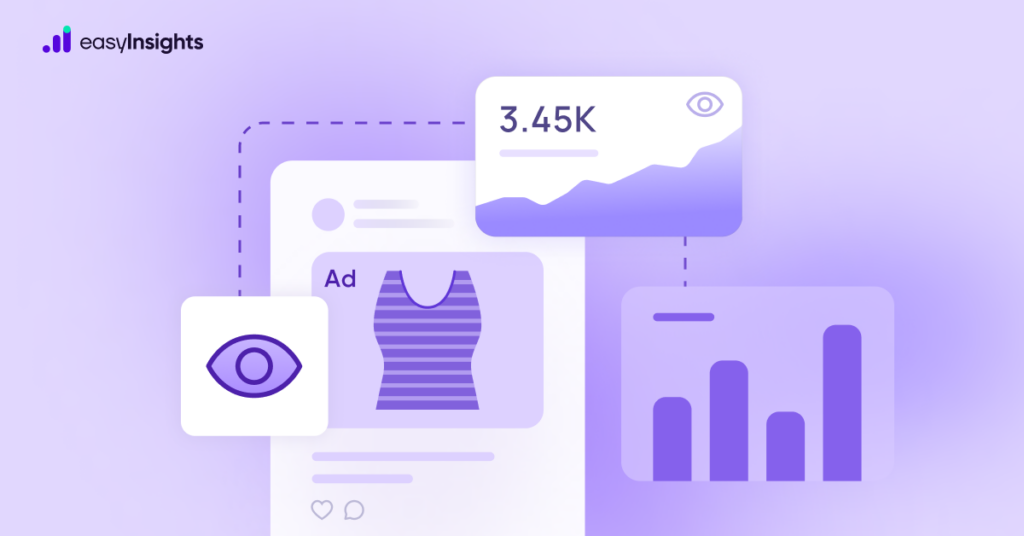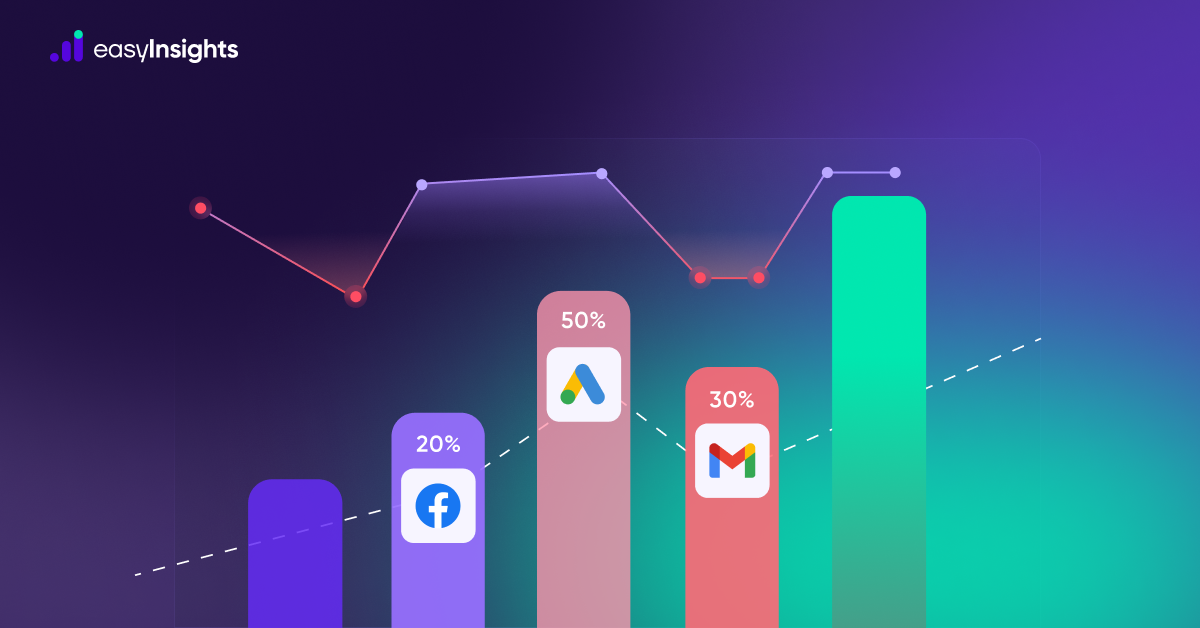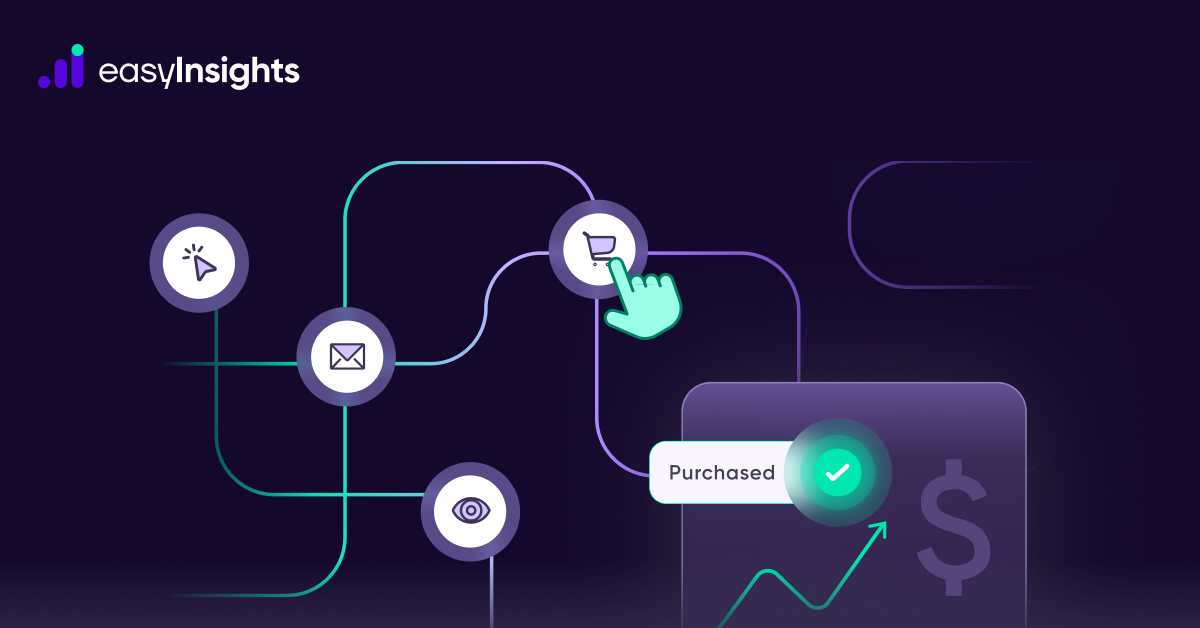
Measuring ad effectiveness, particularly in brand campaigns with sparse clicks, is inherently complex. Brands are increasingly turning to View Through Attribution (VTA) for precise insights into how ad impressions drive conversions. VTA credits conversions to ad views, recognizing their influence even without direct clicks. This model provides a nuanced understanding of ad performance, especially in upper-funnel activities where brand awareness is critical.
In this blog we understand what is View Through Attribution, how it works and how to incorporate it into your marketing strategy
Jump ahead to:
What is View-Through Attribution?
View-through attribution credits conversions (such as sales or leads) to ad impressions, even if users don’t click on the ad directly. It operates on the premise that simply viewing an ad can influence user behavior, leading to a conversion later on. This model acknowledges the power of visual exposure in shaping consumer decisions, providing a more nuanced understanding of ad effectiveness.
View-through attribution is a method of attributing conversions to ads users have seen but not clicked on. It provides insights into the impact of display ads, video ads, and other visual marketing efforts that might influence a user’s decision to convert later. Unlike click-through attribution, which only tracks conversions directly linked to ad clicks, VTA captures the broader influence of ad impressions on user behavior.
How View-Through Attribution Works
View-through attribution operates by observing the behaviors of individuals across advertising networks like Facebook Ads or Google Ads and then associating these behaviors with user interactions on your website. This method relies on cookies to track user activity. Cookies used within the advertising network record events and then connect them with cookies present on your website. Alternatively, data packages transmitted to the ad network through server-side tracking can also aid in this matching process.
- Ad Impression Tracking: When an ad is displayed to a user, the ad server records this impression. This data is crucial for later analysis. Each impression creates a digital footprint that can be traced back when evaluating user behavior and conversions.
- User Behavior Monitoring: The user’s subsequent actions on the advertiser’s website or app are meticulously tracked. This could include making a purchase, signing up for a newsletter, or completing any other desired conversion. By mapping these actions, marketers can identify patterns and correlations between ad impressions and user behavior.
- Attribution Window: VTA uses a predefined time frame (attribution window) to determine whether a conversion can be credited to the ad impression. If a user converts within this window after seeing an ad, the conversion is attributed to that impression. The length of this window can vary depending on the campaign goals and typical user behavior patterns.
- Data Analysis: Marketers analyze the collected data to understand the role of ad impressions in driving conversions. This analysis involves comparing conversion rates of users exposed to ads versus those who were not. It helps optimize future campaigns by identifying which ads are most effective at influencing user behavior, even without direct clicks.
Additional Read: Google Ads Enhanced Conversion -Complete Guide
Click-Through Attribution vs. View-Through Attribution

VTA uses a predefined time frame (attribution window) to determine whether a conversion can be credited to the ad impression. If a user converts within this window after seeing an ad, the conversion is attributed to that impression. The length of this window can vary depending on the campaign goals and typical user behavior patterns.
Benefits of View-Through Attribution
VTA offers several key benefits for marketers:
- Comprehensive Performance Measurement: By considering both clicks and impressions, VTA provides a more holistic view of ad campaign effectiveness. It helps identify campaigns that may be generating valuable brand awareness and consideration even if they don’t result in immediate clicks.
- Improved Understanding of the Customer Journey: VTA offers insights into the various touchpoints that influence a customer’s decision-making process. This knowledge can be used to optimize marketing strategies and allocate budgets more effectively.
- Enhanced Attribution Models: VTA can be combined with other attribution models to create a more nuanced picture of campaign performance. For instance, combining VTA with multi-touch attribution can help identify the optimal allocation of marketing spend across different channels and touchpoints.
- Better Measurement of Brand Awareness Campaigns: VTA is particularly valuable for measuring the impact of brand awareness campaigns, where the primary goal is to increase brand visibility and consideration rather than driving immediate conversions.
Challenges with VTA
While VTA offers significant advantages, it also presents some challenges:
- Attribution Window: Determining the appropriate attribution window is crucial. If the window is too short, valuable conversions may be missed. If it’s too long, it may be difficult to attribute conversions to specific ad impressions accurately.
- Cookie Limitations: Third-party cookie restrictions can impact VTA’s effectiveness, as cookies are often used to track user behavior and attribute conversions.
- Ad Fraud: Ad fraud, such as impression stacking or click fraud, can distort VTA data. It’s essential to implement robust fraud prevention measures.
- Data Complexity: VTA requires sophisticated data analysis and attribution modeling capabilities. Marketers may need to invest in specialized tools or expertise to leverage VTA effectively.
Best Practices for Implementing View-Through Attribution
To effectively implement VTA, consider the following best practices:
- Use Reliable Tracking Tools: Invest in robust tracking and analytics tools that can accurately record ad impressions and conversions.
- Define Clear Attribution Windows: Set appropriate attribution windows that reflect your industry standards and customer behavior patterns.
- Integrate with Multi-Touch Attribution: Combine VTA with other attribution models to get a comprehensive view of your marketing performance.
- Monitor and Optimize: Continuously monitor VTA data and use insights to optimize your ad campaigns for better performance.
- Ensure Compliance: Stay updated on data privacy regulations and ensure your tracking methods comply with relevant laws.
Additional Read: Customer 360: What it is and Why it is Important
View-Through Attribution and CTV Ads
Connected TV (CTV) ads are gaining popularity rapidly as consumers increasingly turn to streaming services for entertainment. VTA is especially beneficial for CTV ads, which are typically viewed but not interacted with directly. Here’s how VTA enhances the effectiveness of CTV advertising:
- Understanding Ad Impact: VTA helps measure the influence of CTV ads on consumer behavior by attributing conversions to ad impressions. Even though viewers can’t click on CTV ads, VTA captures their impact on subsequent online actions.
- Optimizing Ad Spend: By identifying which CTV ads contribute to conversions, marketers can optimize their ad spend, ensuring that resources are allocated to the most effective ads and platforms.
- Measuring Brand Awareness: CTV ads are often used for upper-funnel activities like brand awareness. VTA provides insights into how these ads contribute to long-term brand recognition and consideration, even if they don’t result in immediate clicks or interactions.
- Enhancing Cross-Channel Strategies: Combining VTA data from CTV ads with other digital channels helps create a comprehensive view of the customer journey, revealing how different touchpoints work together to drive conversions.
Implement View through Attribution Accurately with EasyInsights
View-through attribution (VTA) is a powerful tool for understanding the true impact of digital advertising, especially in brand awareness campaigns where direct clicks are not the primary measure of success. By attributing conversions to ad impressions, VTA acknowledges the influential role of visual exposure in the customer journey. Despite its challenges, including managing attribution windows, cookie limitations, and the complexity of data analysis, VTA provides invaluable insights into customer behavior and the effectiveness of marketing strategies.
To effectively harness the power of VTA, integrating it with other attribution models can offer a more comprehensive view of your marketing performance. This combined approach ensures a balanced understanding of how various touchpoints contribute to conversions.
For businesses looking to optimize their marketing strategies and gain deeper insights into ad performance, EasyInsights is an invaluable tool. With its advanced tracking, analytics, and reporting capabilities, EasyInsights helps you navigate the complexities of attribution modeling and make data-driven decisions to enhance your campaigns, including those on CTV platforms. Leveraging tools like EasyInsights ensures you stay ahead of the curve, accurately measuring the impact of your advertising efforts, and ultimately driving better marketing outcomes.
Book a demo with EasyInsights today!
Additional Read: Images or Videos for Facebook Ads – Which is Better?








